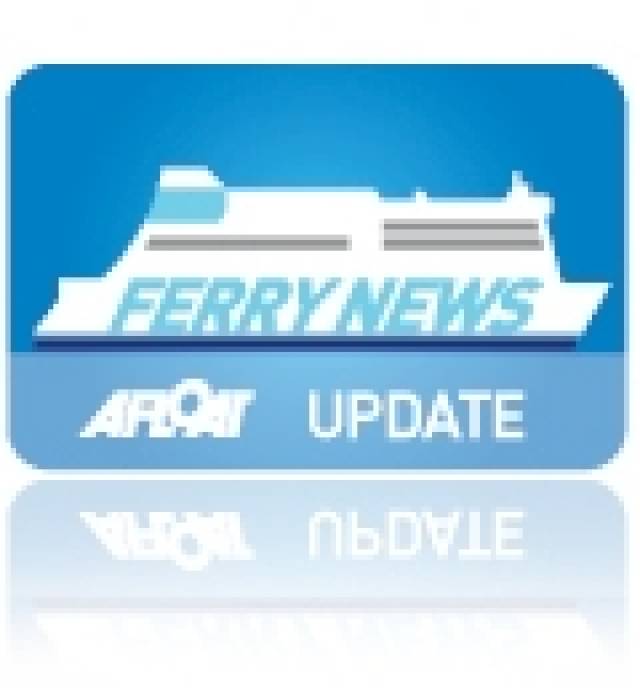#FerryÉconomie - Brittany Ferries are to expand their fleet and offer more no-frills 'économie' UK sailings to Le Havre and Bilbao with the launch in May of chartered ro-pax Baie de Seine, writes Jehan Ashmore.
Baie de Seine was the former Sirena Seaways which operated the final ferry link between the UK and Scandinavia until closed last year by DFDS Seaways on their Harwich-Esbjerg (Denmark) route.
The closure of the historic North Sea route will see the ro-pax operate for Brittany Ferries économie brand in which Etretat launched almost a year ago.
The second ro-pax to join Brittany Ferries 'no-frill's operations, Baie de Seine will serve Portsmouth-Le Havre route (four times a week) and Portsmouth-Bilbao route (once a week).
One of the core reasons for the closure of the North Sea route given by DFDS was the inability to sustain added costs accrued to the new EU Directive on Sulphur Emissions which came into effect at the start of 2015.
For her new role scrubbers are to be fitted to Baie de Seine so to enable her to burn low cost heavy fuel oil yet comply with new low sulphur emissions regulations.
The Brittany Ferries économie brand services are aimed to customers wishing to travel to France or Spain at what the company claim to be 'very reasonable fares' without the cruise-style experience normally provided by the operator.
Baie de Seine is certified to carry 610 passengers but the operator will reduce numbers to well below this capacity on the ro-pax which has limited facilities and space.
She is to join the second économie-branded ship, Etretat, which as alluded above launched the service last year during March. Prior to that the Visentini ro-pax served LD Lines Irish and UK services in addition to those of Celtic Link Ferries.
Mike Bevens, Group Commercial Director, comments: "We have been really pleased with the demand for our new no-frills service so this additional ship will provide a welcome boost in capacity and provide our customers with an even wider range of sailing times. Furthermore, it now brings the total number of services to Spain to seven a week, again providing more choice."
Customers can mix and match économie sailings with the company's other cruiseferry services to Normandy (to include fast-ferry on the Portsmouth-Cherbourg/lLe Havre), Brittany and northern Spain. In addition to the fexibility of travelling out by one route and returning by another.






























































